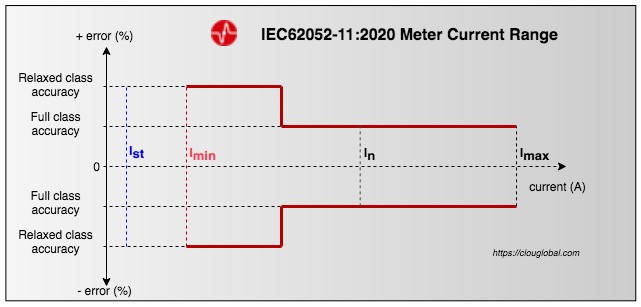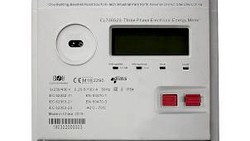By IEC62052-11 Edition 2 definitions it's gone.
In the last 100 years we had a lovely Ib for direct connected meters. Now the name has changed to nominal current In.
Besides this, the new designed meters will show also the minimum current.
For directly connected meters the labelling will be like this:
Imin – In (Imax) or practically 0.5 – 10(40) A for a meter with a minimum current of 0.5 A, nominal current of 10 A and maximum current of 40 A.
The IEC defines four different current subscripts:
- starting current Ist
- minimum current Imin
- nominal current In
- maximum current Imax

Which accuracy error is allowed between Ist and Imin?
The IEC doesn't specify the error in this region. When we look into the OIML R46 recommendations, we find a calculation formula for a maximum permissible error. For a class B meter it's ± 1.5 * Imin/I.
Converting this to IEC, we have a meter with accuracy class 1 and the current I is our nominal current In.
A meter with a minimum current of 250 mA, a nominal current of 5 A and starting current of 20 mA will be allowed to have an accuracy error of ±18.75% on Ist.
Calculation examples:
Starting current Ist: 1.5 * 250 mA / 20 mA = ±18.75%
Current 150 mA: 1.5 * 250 mA / 150 mA = ±2.5%
Minimum current Imin: 1.5 * 250 mA / 250 mA = ±1.5%
Keep in mind that this is only a recommendation for MID meters. The IEC doesn't give allowed error values.
If you have an idle test bench, maybe you'd like to make an accuracy test on starting current. Write a comment and share your test results with us.
Thank you for reading and "Happy Testing".
Editor's note: This article was originally published in July 2020 and has been updated for comprehensiveness.




There's an arror in the formula you provided.
If we use ± 1.5 * Imin / I as you wrote, then the result will not be ±18.75%.
If we use ± 1.5 * Imin * I then the result will be the one you wrote.
So, whats' the right formula?
Salve Maurizio, the formula is right (see OMIL R46, table 2), and the calculation too. Thank you for making me a moment confuse :).
I have updated the text with some calculation examples. Thank you for reading and comment.